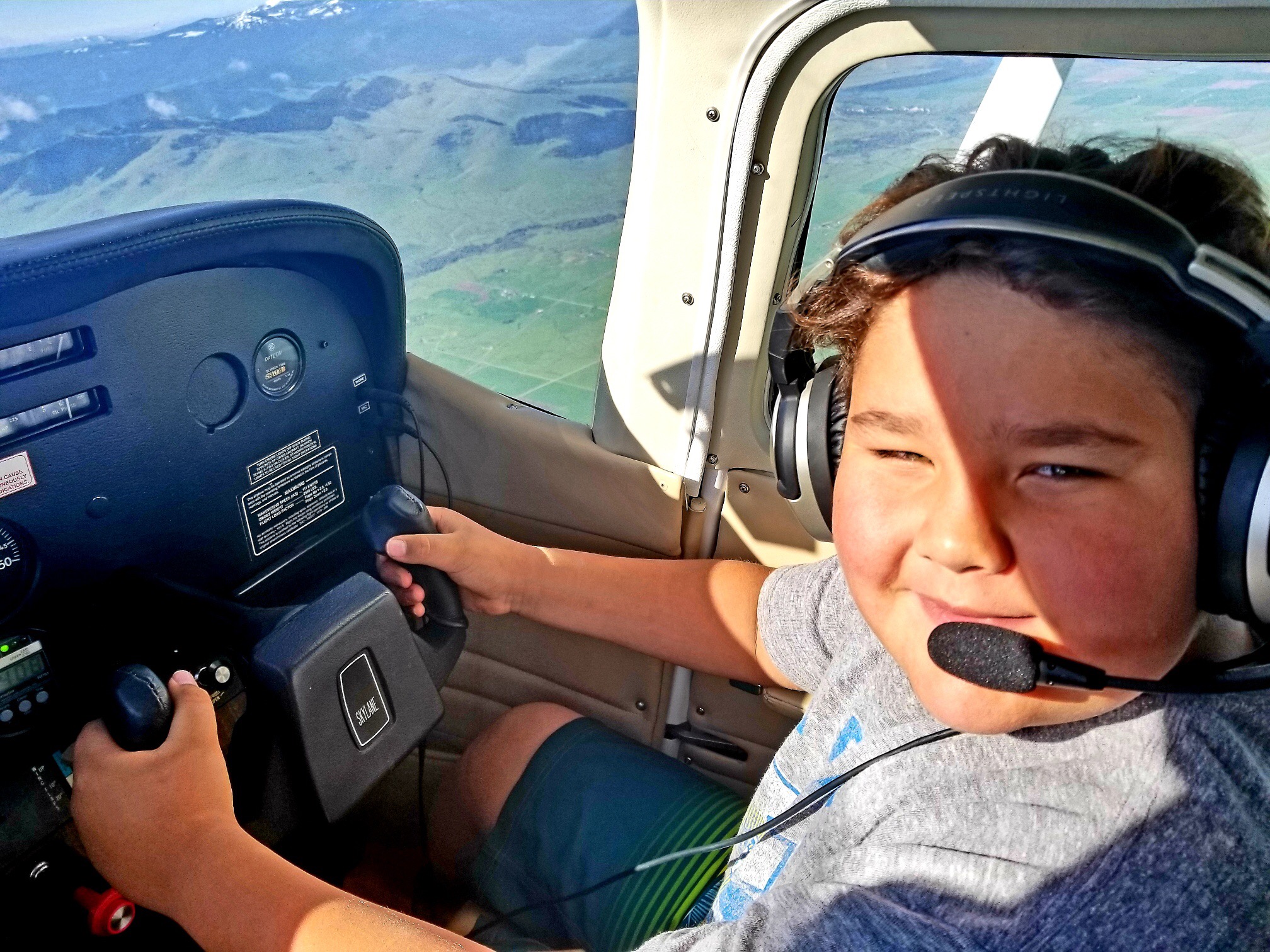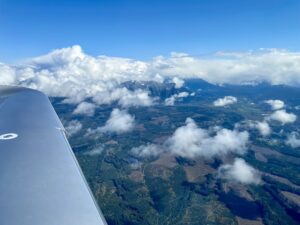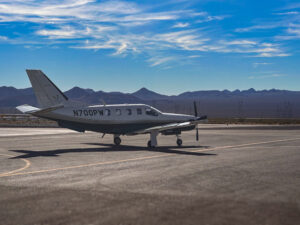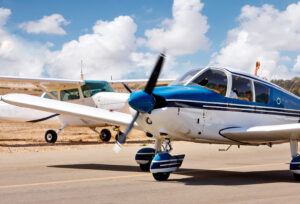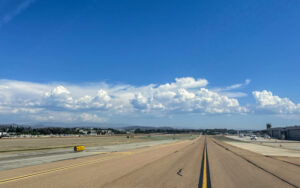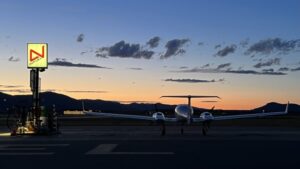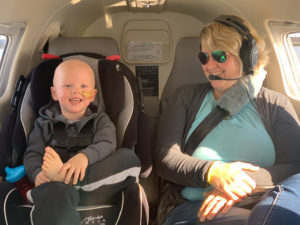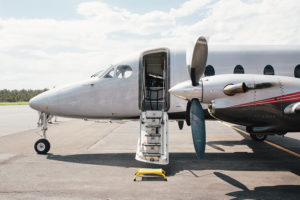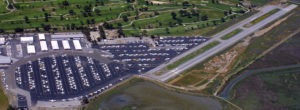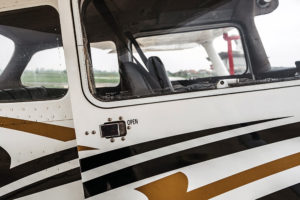Angel Flight West believes that we should share what we learn about our missions and the airports we visit so that we can learn from each other. So, with that in mind…
A couple of years ago I was flying a young man to Quincy, CA (2O1), an airport located near his home in the mountains of Northern California. Quincy has no weather reporting, no instrument approach, and is located deep in a narrow valley. The weather was nice, mostly VMC, but, as is often the case, there were afternoon clouds over the Sierras
My passenger and I had discussed the possibility that because of the clouds if we couldn’t reach our planned destination we would have to land somewhere else. We agreed that Chico would be a good alternate. It would take a couple of hours for his ride to reach him if we had to divert.
The flight was comfortable and the broken layer of clouds was high enough that it seemed that we could reach our destination safety. I was on an IFR flight plan and on top, but found a hole through which I could see the “main” and only road to the town. I cancelled IFR and comfortably descend below the broken ceiling. So far, so good. Using a combination of GPS and a Sectional, I followed the road up a rising valley to the airport. As is often the case in the mountains there were strong winds and significant turbulence.
At this point, the trap was sprung. The valley was so narrow and the turbulence strong enough that maneuvering was a challenge. To add to the challenge, the airport is at 3415 feet MSL and, beginning across the road from the airport is a mountain that tops at almost 7,000 feet just a little over 4 miles from the airport. I overflew the airport and the windsock was sticking straight out, 90 degrees to the runway. My first thought was to go back to Chico, but I watched a high wing Cessna land. I talked to the pilot and he said that the winds on the ground weren’t as bad as they seemed. With close to 2,500 hours in the low wing Comanche I owned then and the fact that I often fly into an airport with similar winds and turbulence I decided I could safely land as well. It might be interesting to note that one of the two times I have chosen not to land at an airport because of winds was at that other airport. I was IFR and decided that the winds were too strong and, even as a high wing Cessna landed, I negotiated a clearance back to my home airport. The other time was landing at another airport and at 50 feet I decided the winds were too strong and departed for another airport to refuel.
So I maneuvered to the downwind side of the valley an initiated a turn into what was then a headwind thus decreasing the size of the turning radius. I flew a long stable final approach but I was spring loaded for a go around and departure to Chico. The landing was smooth with a slight weathervaning from a gust as I touched down. But it was pretty much a non-event.
While waiting for my passenger’s ride to arrive it was obvious that the winds were increasing. When he was safety on his way home, I planned my departure. The winds now favored taking off toward the west and rising terrain. But that was opposite to the direction that I needed to go to get out of the mountains and opposite the recommended take-off runway because of the rising terrain. The broken stratus clouds had solidified somewhat meaning that I was undoubtedly going to have to remain below them until reaching clear skies. Of course, if the situation warranted, I was prepared to climb through them to safety on top. I had the frequency for the center controller dialed in and was prepared for that possibility.
Even with the winds, I wasn’t as concerned with the take-off nor the rising terrain as I was determining how I was going to reverse course to follow the valley and the road back to lower terrain. The plan was to once again parallel the downwind side of the valley using take-off flaps and about 10 knots faster than Vx to allow for the turbulence. I planned to again make a minimum radius turn back toward the east and into the winds. The take-off was fine, but the turbulence was worse making a low speed turn more risky. Here’s a hint that I recently heard from Barry Schiff: trust your gut! On that day, my gut said don’t turn. So I continued straight ahead aiming for a narrow pass in the mountain ridge ahead. Climbing at best angle of climb speed, the headwinds gave me adequate time to climb safely through the pass. Once on the other side, I circled to gain altitude and when I had sufficient altitude I reversed course and began following the road out of the mountains. Other than a breathtaking view, the remainder of the flight was straightforward.
Here’s what I learned on this mission. First and foremost, be very cautious when flying into an environment where there is no weather reporting. If I’d known the winds, I would have initially gone straight to my alternate. Second, don’t feel you have to complete the mission at the original destination. Rather than attempting to land with strong crosswinds, I could have elected to fly to Chico and that would have been a solid decision that nobody could question. Third, have a plan for each stage of your flight and continue to evolve it as changing conditions warrant. Finally, trust your gut. Many times over the years I’ve had this little feeling in my gut that warns me of impending risk. If you ever have that feeling, trust it and go for the safe response.


